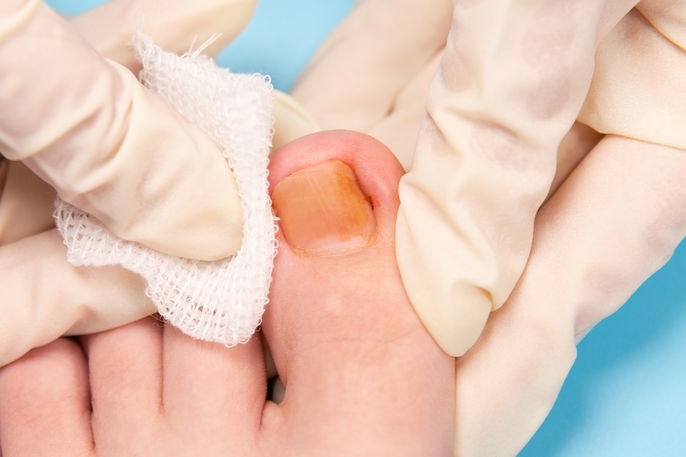An ingrown fingernail is the growth of the corner or side of the nail into the skin. It causes inflammation and/or infection, as well as symptoms such as swelling, redness or pain. In some cases there may also be pus noted around the fingernail.
An ingrown fingernail, which is also referred to as onychocryptosis, can be caused by cutting the nail incorrectly. Although it most commonly affects the big toe, can affect the fingernails or other toe nails.
Treatment for an ingrown fingernail is carried out by a dermatologist or general practitioner, and varies depending on the severity of the symptoms. Using a piece of cotton can help to lift the nail, however surgery may be required for more severe cases.

Common symptoms
The main symptoms of an ingrown fingernail are:
- Pain in the affected finger
- Swelling
- Redness around the nail
- Pus at the site when infection occurs
Furthermore, when the infection of an ingrown fingernail becomes chronic, a spongy tissue may also form at the site, called pyogenic granuloma.
If you notice symptoms of an ingrown fingernail, particularly if you have a history of diabetes or reduced circulation, or if you notice pus in the area, you should see a family doctor or dermatologist for assessment and treatment.
Confirming a diagnosis
The diagnosis of an ingrown fingernail is confirmed by a dermatologist or family doctor, who will assess your symptoms and health history, and perform a physical examination by observing the characteristics of the affected nail and finger.
If a nodule is noted under the nail, the doctor may additionally order an X-ray to rule out the presence of bone growth under the nail. This is referred to subungual exostosis.
Possible causes
The main causes of ingrown fingernail are:
- Cutting the corner of the nail or cutting the nail too straight
- Very curved or wide nails
- Poor nail alignment
- Nail trauma, such as biting your fingernails.
Additionally, some health conditions can increase the risk of developing an ingrown fingernail, such as diabetes or poor blood circulation.
Another factor that increases the risk of ingrown fingernails is the use of some medications such as cetuximab or gefitinib, for example.
Treatment options
Ingrown fingernail treatment should be guided by a dermatologist or family doctor, and may vary depending on the severity of symptoms.
In milder cases, the doctor may advise the use of a small piece of cotton in the corner of the affected nail to prevent the nail from continuing to grow into the skin. This can help to naturally lift the nail from the skin. Another great home remedy for an ingrown fingernail is to place the affected hand in a basin with warm water and salt, as this can help to relieve pain and inflammation in the area.
Also recommended: Ingrown Toenail Home Treatment: Step-by-Step tuasaude.com/en/ingrown-toenail-home-treatmentIn addition, the doctor may prescribe analgesic or anti-inflammatory medications (such as acetaminophen or ibuprofen) to relieve symptoms, or antibiotics to treat any possible infection and pus.
In more serious cases, the doctor can perform surgery with local anesthesia to remove the ingrown nail and surrounding tissue. An ingrown fingernail can be treated with electrocauterization, radiofrequency ablation or carbon dioxide laser.






























